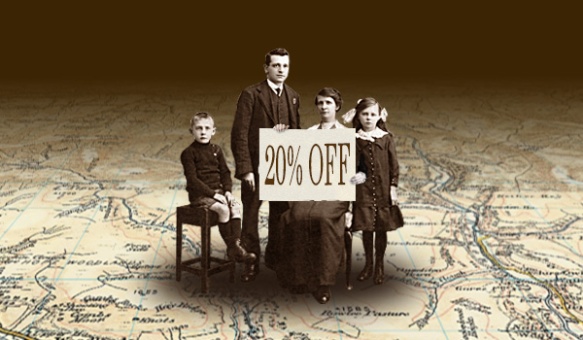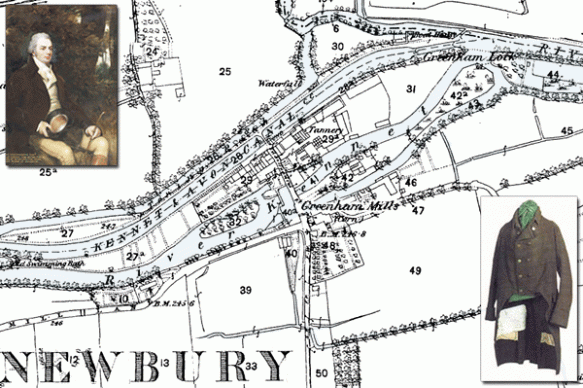
20% OFF all maps – One day only!
Use coupon code C-14JUNE. simply enter the code when prompted during checkout.
Visit www.cassinimaps.co.uk
(Valid until 14th June 2017. P&P applies as normal.)


20% OFF all maps – One day only!
Use coupon code C-14JUNE. simply enter the code when prompted during checkout.
Visit www.cassinimaps.co.uk
(Valid until 14th June 2017. P&P applies as normal.)

Map: Ordnance Survey Town Plan 1:500 first published 1908
The Rochdale Society of Equitable Pioneers was a group of 28 that was formed in 1844. The society was made up from a variety of local trades with more than half involved in the production of textiles – ten of them flannel weavers whilst others were cloggers, shoemakers, joiners or cabinet makers, but they united in common cause against the oppressive poverty facing their community in 1840s Rochdale.
As mechanisation forced more and more skilled workers into poverty, these tradesmen decided to band together to open their own store selling food items they could not otherwise afford. With lessons from prior failed attempts at co-operation in mind, they designed the now famous Rochdale Principles, and over a period of four months they struggled to pool £1 per person for a total of 28 pounds of capital. On 21 December 1844, they opened their store in 31 Toad Lane with a very meagre selection of butter, sugar, flour, oatmeal and a few candles. Within three months, they expanded their selection to include tea and tobacco, and they were soon known for providing high quality, unadulterated goods. Ten years later, the British co-operative movement had grown to nearly 1,000 co-operatives. Although other co-operatives had preceded them, the Rochdale Pioneers’ co-operative became the prototype for societies in Great Britain.
A visitors book was kept in Toad Lane from the 1860s and shows the range of their influence. By 1862 German, Spanish and Russian visitors had made their way to Rochdale to see how a successful co-operative was run. The following year Alexander Campbell, the Scottish Owenite and originator of the dividend signed the book. The first Japanese signatory was Tomizo Noguchi in 1872.
Rochdale Pioneers traded independently until 1991, with name changes inspired by mergers with neighbouring co-operatives, finally ending up today as the The Co-operative Group.
To find maps of your are visit Cassini Maps

Newbury, Berkshire – Map: Ordnance Survey Old Series 1817
In June 1811, John Coxeter, a well-known cloth manufacturer, the owner of nearby Greenham Mills, took on the challenge of the making of a legendary coat for Sir John Throckmorton.
Coxeter, is reported to have said “So great are the improvements in machinery I have lately introduced into my mill, that I believe that in twenty- four hours I could take the coat off your back, reduce it to wool, and turn it back into a coat again”.
So impressed was Sir John with Coxeter’s claim that not long after the conversation had taken place, Sir John Throckmorton laid a bet of a thousand guineas that at eight o’clock in the evening of June the 25th, 1811, he would sit down to dinner in a well-woven, properly-made coat, the wool of which would come from fleeces still on the sheeps’ backs at five o’clock that same morning. Most thought the feat impossible and it was not long before his bet was eagerly accepted.
Promptly at five o’clock operations commenced, and no time was lost in getting the sheep shorn, the wool was washed, spun, and woven. The cloth was manufactured, dyed and prepared by four o’clock in the afternoon. Just eleven hours after the arrival of the two sheep in Coxeter’s mill-yard. The cloth was now put into the hands of the tailors. Mr. James White, together with nine of his men, began the process of turning the cloth into a “well woven, properly made coat”. For the next two and a quarter hours the tailors were busy cutting out, stitching, pressing, and sewing on buttons and at twenty minutes past six Mr. Coxeter presented the coat to Sir John Throckmorton, who, before over five thousand people who had gathered to watch, put on the coat and sat down to dinner with 40 invited guests in time for dinner to be taken at eight o’clock that evening.
Throckmorton won his 1000 guineas and John Coxeter had the sheep roasted for the crowds that had gathered to see the fun, as well as donating 120 gallons of beer in one of the greatest publicity stunts of the age.
The original coat is still displayed at Coughton Court near Alcester the seat of the Throckmorton family since 1409.
Newbury, however, has its own version of the coat, produced when the feat was repeated in 1991 – knocking a further hour off the record!

Shakespear’s birthplace, Henley Street. (MAP: 1886 – Town Plan, Scale: 1:500)
Shakespeare’s Birthplace is a 16th-century half-timbered house situated in Henley Street, Stratford-upon-Avon, Warwickshire, where it is believed that William Shakespeare was born in 1564 and spent his childhood years. Shakespeare is also known to have spent the first five years of married life in this house with his new wife, Anne Hathaway.
The house itself is relatively simple, but for the late 16th century it would have been considered quite a substantial dwelling. John Shakespeare, William’s father, was a glove maker and wool dealer, and the house was originally divided in two parts to allow him to carry out his business from the same premises.
The building is typical of the times and was constructed in wattle and daub around a wooden frame. Local oak from the Forest of Arden and blue-grey stone from Wilmcote were used in its construction, while the large fireplaces were made from an unusual combination of early brick and stone, and the ground-floor level has stone-flagged floors.
The plan of the building was originally a simple rectangle. From north-west to south-east, the ground-floor consisted of a parlour with fireplace, an adjoining hall with a large open hearth, a cross passage, and finally a room which probably served as John Shakespeare’s workshop. A separate single-bay house, now known as Joan Hart’s Cottage, was later built onto the north-west end of the house, and the present kitchen was added at the rear with a chamber above it.
The ownership of the premises passed to William on John Shakespeare’s death.
William already owned his own property in Stratford and had no need for the Henley Street premises as a home for himself or his family. Consequently, the main house was leased to Lewis Hiccox, who converted it into an inn known as the Maidenhead (later the Swan and Maidenhead Inn).
Under the terms of Shakespeare’s will, the ownership of the whole property (the inn and Joan Hart’s cottage) passed to his elder daughter, Susanna, upon his death.
In 1649 it passed to her only child, Elizabeth, and then in 1670 to Thomas Hart. Hart was the descendant of Shakespeare’s sister, Joan, whose family had continued as tenants of the smaller house after her death in 1646. The entire property remained in the ownership of the Harts until 1806.
Find out about the history of your area. Visit Cassini Maps
Last few days of this Special Offer! – 25% Off all maps (ends 30th Sept 2015)
Use the code C-SUN15 to claim your Discount.
Simply enter the code when prompted during checkout. P&P applies as normal.
Offer applies to all maps available on www.cassinimaps.co.uk
Including our Quad maps (4 maps of the same location but from diferent time periods) as shown above.
New! – Cassini brings you Ordnance Survey’s most detailed historical mapping.
Cassini’s Town Plan mapping is the most detailed historical Ordnance Survey mapping available. Easy to find and download.

Maps published from the mid 1800’s to the 1920’s
• Instant downloads only £9.99 (RRP:£14.99)
• Ideal for Family History research
• Choose maps from 468 available Towns
• Amazing detail – 1:500, 1:528 and 1:1056 scales (dependent on location)
These maps were published for larger towns and cities at scales of 1:500, (c.10′ to 1 mile), 1:528 (exactly 10′ to 1 mile) and 1:1056 (5′ to 1 mile) from the mid 1800’s onwards. An immense amount of detail is shown, down to every lamp-post and every pillar-box, even paths, trees and sheds in peoples gardens. For those who are particularly interested in local history and genealogy, the town plans are essential research tool.
Find maps of your area on the Cassini Maps website Town Plan Maps